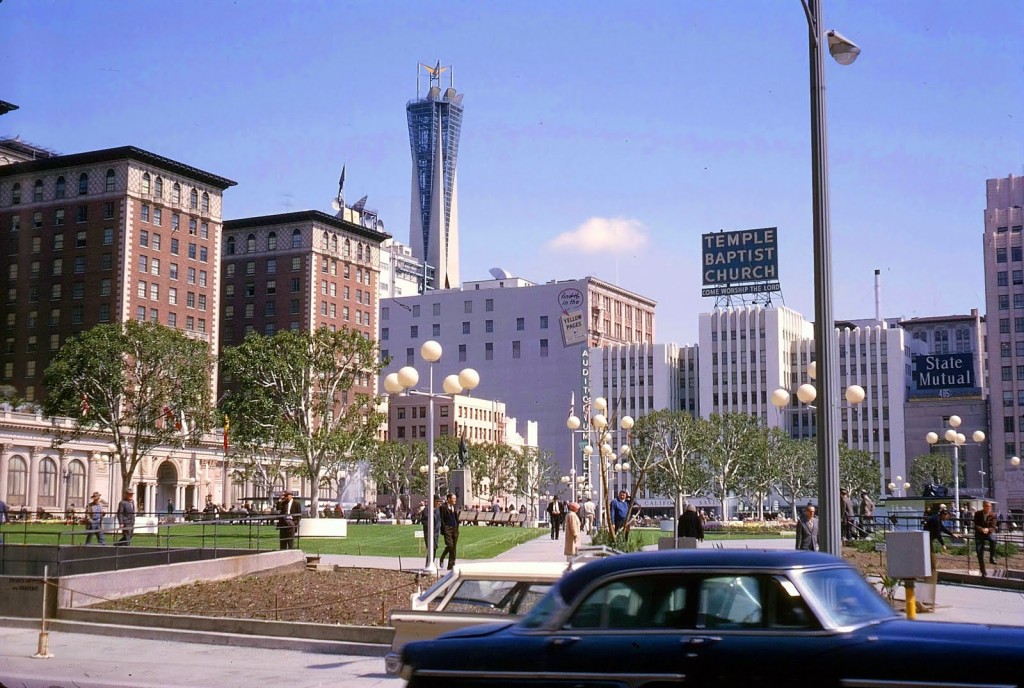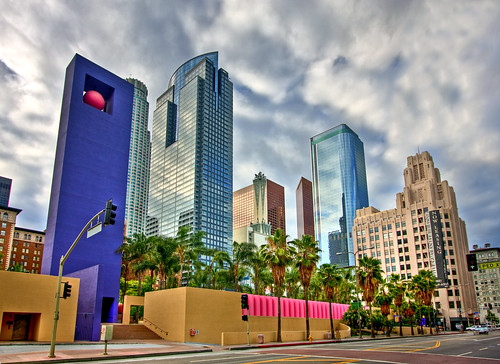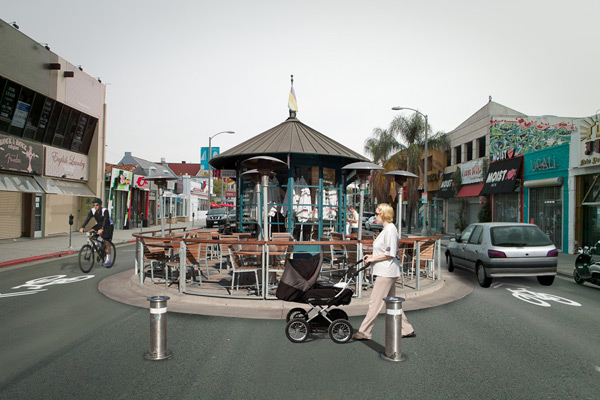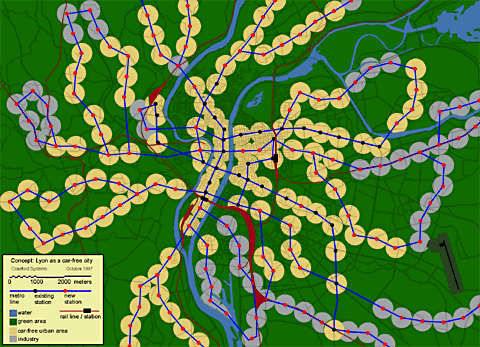My slideshow presentation, with audio graciously provided by Streetsblog Editor Damien Newton. It's 36 minutes long, so be sure to prepare a beverage and maybe a snack. Workshop description:
Urban design tends to remain invisible for most people — until something drastic happens to shake things up. That's the mission of Narrow Streets: Los Angeles, a project where I take photos of our city's famously wide roads and narrow them down using Photoshop. In the process, the photos reveal a suddenly non-car-centric vision of L.A. designed to spark the viewer's imagination and emphasize how important street design can be in affecting our daily lives.For this workshop, I'll present an overview of studies regarding wide street safety, livability, and property value before reviewing street traffic calming design strategies and the virtues of narrow, human-scale streets. Then, we'll use narrowed photographs to facilitate a freeform discussion about the current state of street life in L.A. and how we could improve things in the future. I'll also demonstrate my photo editing process for those interested in taking urban landscapes of their own.
After the slideshow I invited people to engage in a freeform discussion. Here's a transcript of our lively conversation.




















































